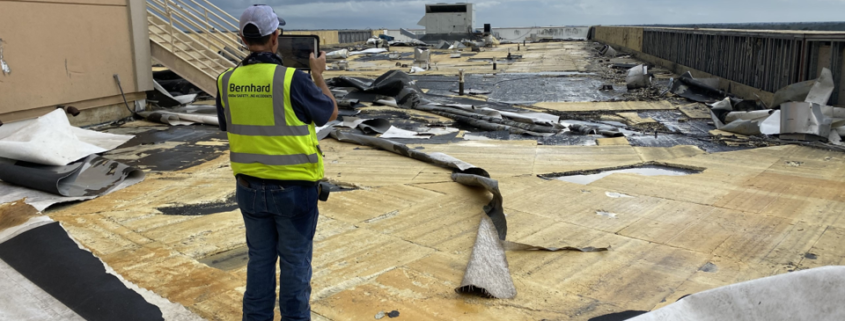3 Valuable Disaster Response Lessons Learned From Hurricane Ida
As we enter another Hurricane season, it is impossible not to look back and remember the turmoil of Hurricane Ida. We have made it our responsibility to use the past as a guide and build upon our disaster response experiences to better equip our teams to deal with what the future may hold. Storms and natural disasters routinely come with little warning, but that doesn’t mean we can’t be prepared well ahead of time. Our teams have experience providing disaster response for Hurricane Katrina, Hurricane Michael, the Baton Rouge floods, and many more.
When Hurricane Ida entered the Gulf of Mexico on Aug. 29, 2021 and took aim at the state of Louisiana, it seemed like a horrifying case of déjà vu.
Ida was poised to strike on the 16th anniversary of Hurricane Katrina, which inundated New Orleans, took the lives of more than 1,800 people and caused $160 billion in damage and a refugee crisis in the region. As the storm neared, Ida quickly strengthened into a devastating Category 4 hurricane, packing sustained winds of 150 mph.
With hospitals in south Louisiana already at capacity due to COVID-19, officials in Louisiana and beyond feared the worst. Bernhard customers include most of the healthcare facilities in the region, so we knew it would take all the experience, technical skill and ingenuity our teams could muster to keep those facilities up and running to save lives.
As predicted, Ida roared ashore at Port Fourchon on August 29 before grinding inland. By the time the hurricane dissipated, Ida had caused at least $75 billion in damage. Though more than 1 million people across Louisiana were left without power, round-the-clock efforts by Bernhard crews kept clients running throughout the disaster.
Here are a few of the things we learned from our experience with Hurricane Ida:
GET AHEAD OF THE STORM
Throughout the course of the hurricane, many potential catastrophic disasters were mitigated in advance, thanks to Bernhard operators and technicians who were stationed there ahead of the storm, embedded with the clients we serve. In addition, Bernhard teams pre-staged dozens of backup generators before the storm to keep the power and air-cooling capacity flowing to mission-critical facilities, while on-site crews tended the generators and repaired units as issues arose.
While it’s difficult for team members to risk putting themselves in harm’s way, our ability to immediately counteract the effects of the hurricane as it made landfall and came ashore kept several healthcare facilities online, providing care without electrical interruption.
ALWAYS BE READY TO PIVOT
In the chaos of a Category 4 hurricane and its aftermath, with multiple threats to mission-critical infrastructure coming from all directions, a disaster is literally seconds away at any moment. It was important for Bernhard crews to stay flexible, alert and in communication, constantly evaluating and re-prioritizing threats to mission-critical infrastructure.
In one instance, after patients were displaced from another facility by the storm, Bernhard teams eased overcrowding by preparing 15 existing patient rooms, relocating multiple headwall rough-ins and replacing some light fixtures and all outlets. In another instance, after a client campus lost access to the local water supply, Bernhard crews installed an industrial-grade filtration system before switching to a secondary source.
These are just a few of the dozens of ways the flexibility and on-the-fly decision making of Bernhard teams helped stave off trouble for our clients during and after Hurricane Ida. Every solution utilized is a lesson to take into future crises and disaster response scenarios.
OUR JOB IS ANY JOB THAT NEEDS TO BE DONE
In a rapidly-unfolding crisis, an organization that gets bogged down with hierarchy and job descriptions is bound to fail. During and after Ida, there was only one job for Bernhard crews: whatever was necessary to keep client facilities whole and operating. Passing the buck is not an option.
Keeping the power on at client facilities after Ida meant keeping the generators running, which required thousands of gallons of diesel fuel per day. Suppliers who had previously serviced those facilities couldn’t find a route to deliver more fuel due to downed power lines and inundated roads. Bernhard used our logistics and transportation experience to deliver more than 200,000 gallons of diesel in the first five days after the storm.
It wasn’t necessarily our job. But we did it, because that’s what it took to fulfill our mission for our clients. Bernhard’s national footprint allows us the unique capability to better assist with logistical and resource challenges for any type of disaster.
Every experience with a natural disaster is an opportunity to learn. The lessons Bernhard teams take from our experiences in Ida and other disasters makes us stronger and more resilient when the next storm inevitably comes calling.
Ready to learn more about Bernhard’s disaster response services, including our efforts during the COVID-19 pandemic and recent natural disasters? Visit Bernhard.com/disaster-response.



